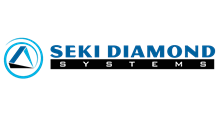
December 1 - 6, 2024
Boston, Massachusetts
Symposium Supporters
2024 MRS Fall Meeting & Exhibit
EL01.02.02
[1] Z. Ren, W. Choy*, et. al., Adv. Function. Mater., 29, 1905339, 2019; [2] Z. Ren, W. Choy*, et. al., ACS Energy Lett., 5, 2569, 202; [3] Z. Ren, W. Choy*, et. al., Adv. Mater., 33, 2005570, 2021; [4] Z. Ren, W. Choy*, et. al., Nano-Micro Lett, 14:66, 2022; [5] D. Zhang, W. Choy*, et. al., ACS Energy Lett., 9, 1133, 2024, [6] H. Lin, W. Choy*, et. al., Adv. Mater., 2008820, 2021. [7] B. Lyu, W. Choy*, et. al., ACS Energy Lett., 8, 577,2023; [8] D. Li ,W. Choy*, et. al., ACS Energy Lett., DOI:acsenergylett.4c00881; [9] B. Lyu, W. Choy*, et. al., Angewandte Chemie, in press, [10] C. Liu, W. Choy*, et. al., Adv. Funct. Mater. 2024, 2404791.
Design of Multifunctional Ligand Structures for Improving the Efficiency and Stability of Low-Dimensional Red-Green-Blue (RGB) Perovskites
When and Where
Dec 2, 2024
2:30pm - 2:45pm
2:30pm - 2:45pm
Sheraton, Second Floor, Back Bay B
Presenter(s)
Co-Author(s)
Wallace Choy1
The University of Hong Kong1
Abstract
Wallace Choy1
The University of Hong Kong1
Halide perovskites have raised wide interest these years for photovoltaics, light-emitting diodes, and other applications due to their excellent optical and electronic properties, low cost, solution processability, and diversity as a group of materials. By ligand designs, we will discuss the influences on the phase distribution, carrier transfer and confinement of low dimensional perovskites will be improved. Using blue quasi-2D perovskites LEDs (PeLEDs) as examples, we can enhance the hole injection for better balance carrier and improve the efficiency [1], we also modulate the n-phase distribution [2,3], optimize the carrier transfer and confinement [4] and suppress the ion migration [5] to improve PeLED performances. For perovskite nanocrystals (NCs), we will design the functional side-branches for good NC dispersion and high electrical conduction and then optimize the spacing between polydentate functional groups of polymer ligands to match the surface pattern of CsPbBr1.8Cl1.2 PeNCs, resulting in effective synergistic passivation effect and significant improvements in PeLED efficiency and stability [6-9]. We then further extend the ligand design to enhance the mechanical stability by establishing ligand-termination surface structure on perovskites with anchoring points and polymeric soft chains on perovskites beyond the corresponding functional group-only or polymer-only strategies in reducing the Young’s modulus to achieve high efficiency and mechanical stabile flexible PeLEDs [9]. Overall, the efficiency and stability of the red-green-blue (RGB) perovskite LEDs can be significantly improved by comprehensively designing the ligand structures.[1] Z. Ren, W. Choy*, et. al., Adv. Function. Mater., 29, 1905339, 2019; [2] Z. Ren, W. Choy*, et. al., ACS Energy Lett., 5, 2569, 202; [3] Z. Ren, W. Choy*, et. al., Adv. Mater., 33, 2005570, 2021; [4] Z. Ren, W. Choy*, et. al., Nano-Micro Lett, 14:66, 2022; [5] D. Zhang, W. Choy*, et. al., ACS Energy Lett., 9, 1133, 2024, [6] H. Lin, W. Choy*, et. al., Adv. Mater., 2008820, 2021. [7] B. Lyu, W. Choy*, et. al., ACS Energy Lett., 8, 577,2023; [8] D. Li ,W. Choy*, et. al., ACS Energy Lett., DOI:acsenergylett.4c00881; [9] B. Lyu, W. Choy*, et. al., Angewandte Chemie, in press, [10] C. Liu, W. Choy*, et. al., Adv. Funct. Mater. 2024, 2404791.
Keywords
inorganic | organic
Symposium Organizers
Himchan Cho, Korea Advanced Institute of Science and Technology
Tae-Hee Han, Hanyang University
Lina Quan, Virginia Institute of Technology
Richard Schaller, Argonne National Laboratory
Symposium Support
Bronze
JEOL USA
Magnitude Instruments
JEOL USA
Magnitude Instruments
Session Chairs
Himchan Cho
Tae-Hee Han




